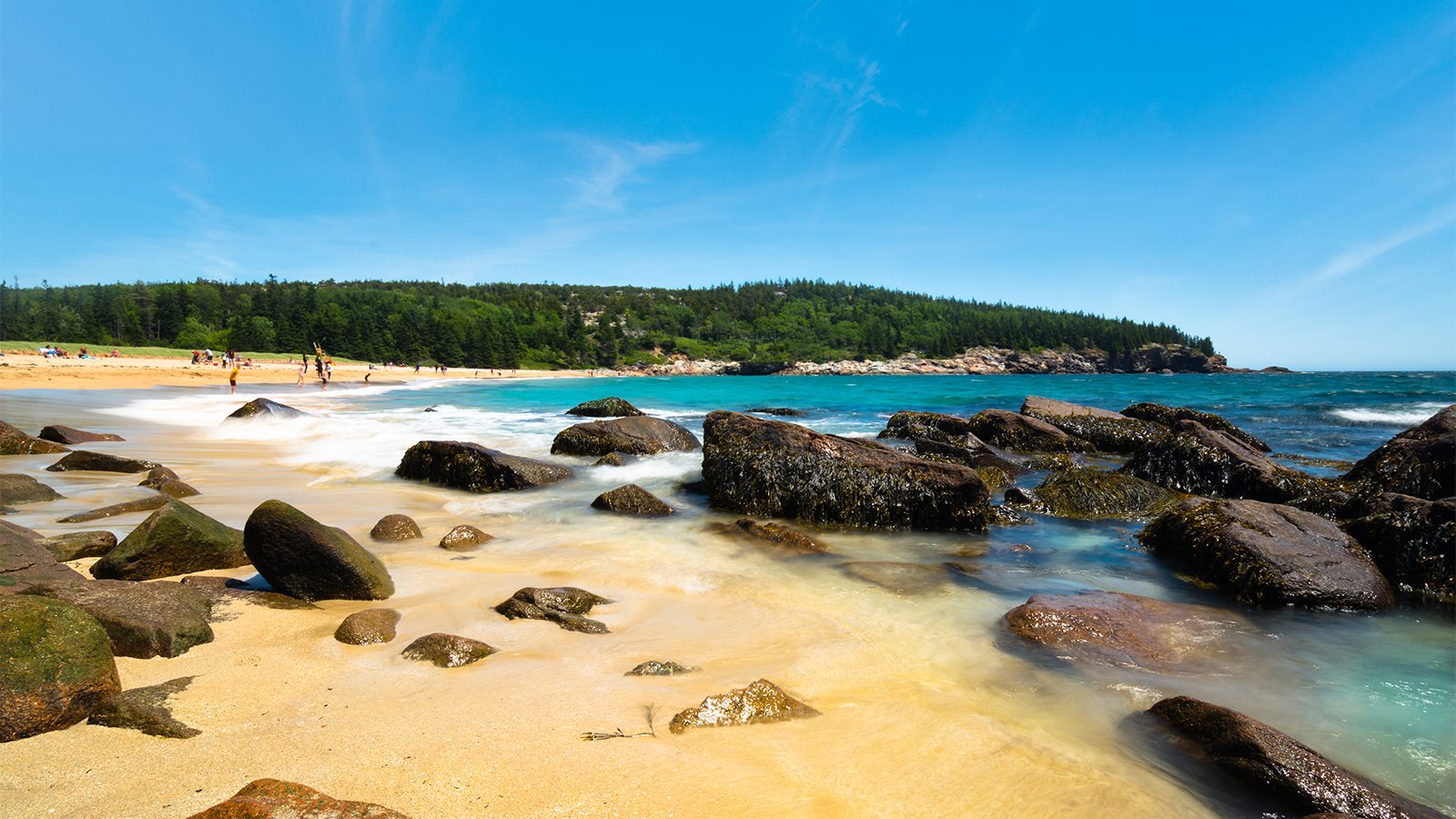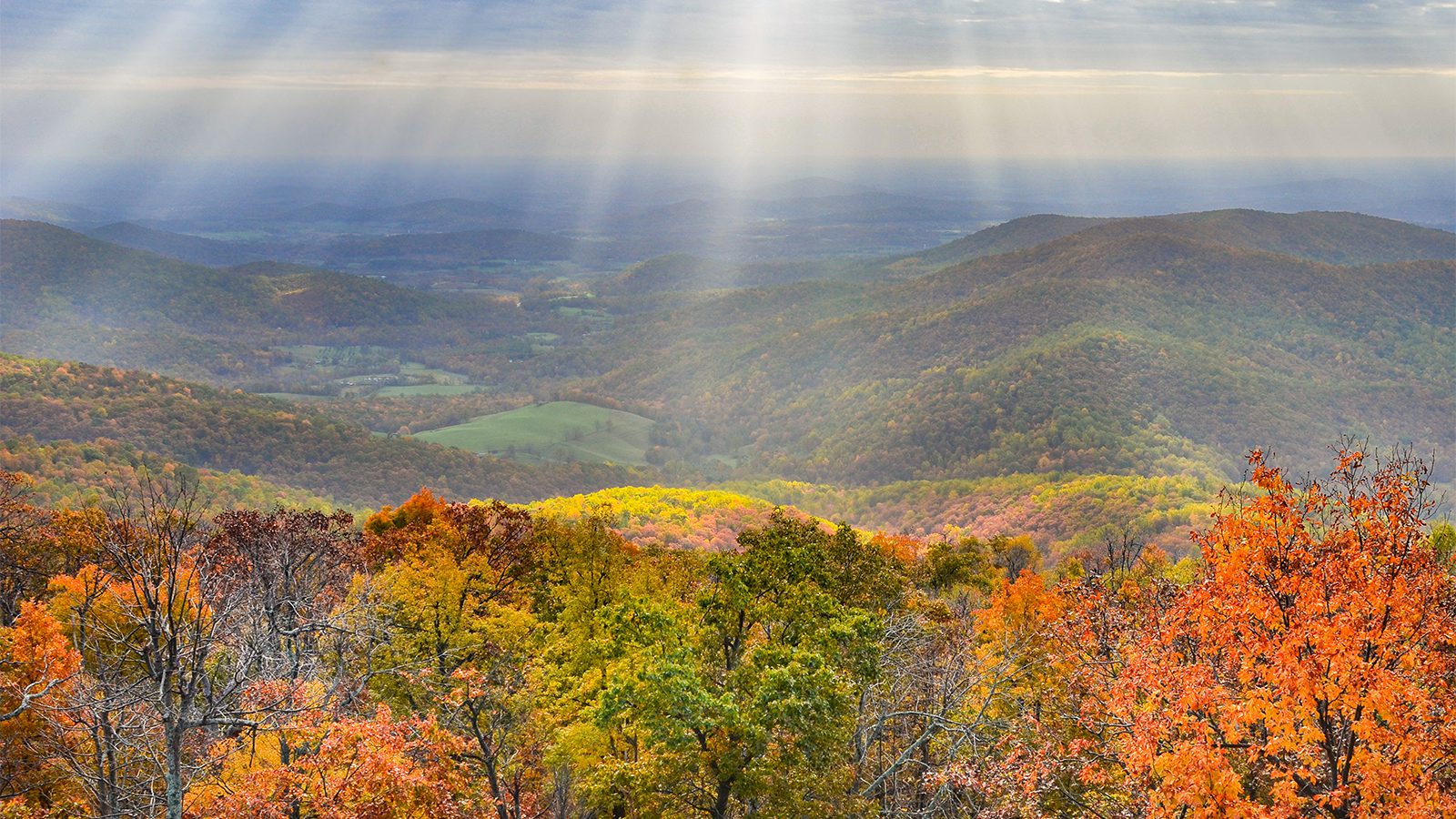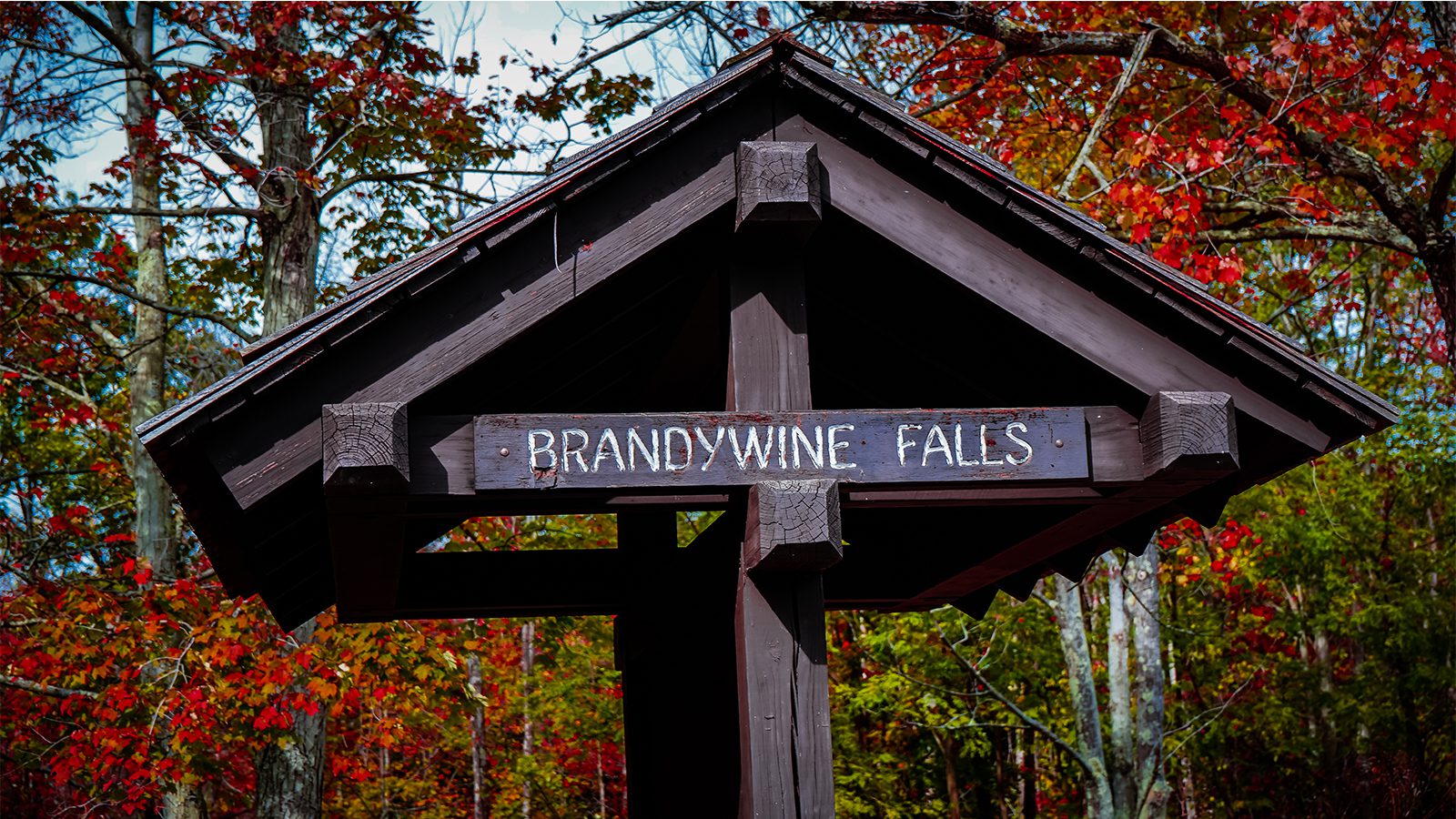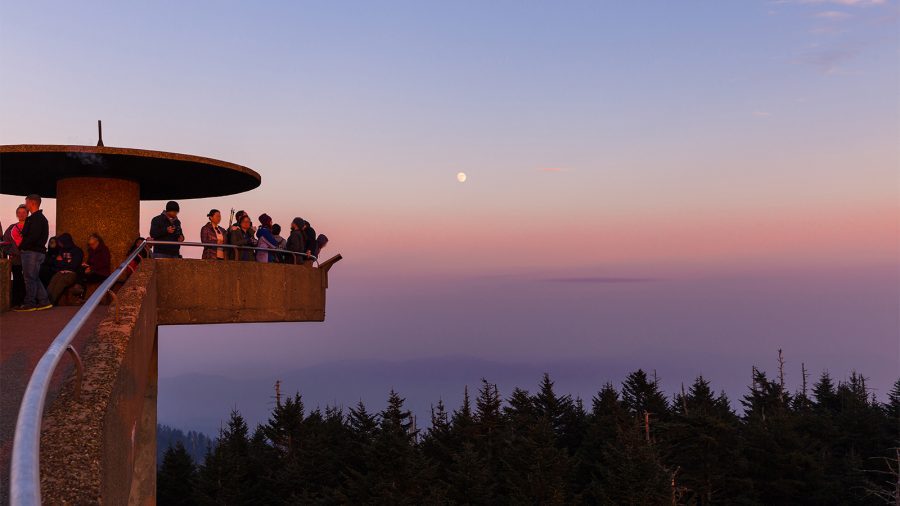
From viewing beautiful autumn leaves to visiting frozen waterfalls to tubing down a fast-flowing creek, Great Smokies National Park offers something for every season of the year.
In this article, we’ll cover some of the best activities the Smokies have to offer in winter, spring, summer, and fall.
Things to do in summer
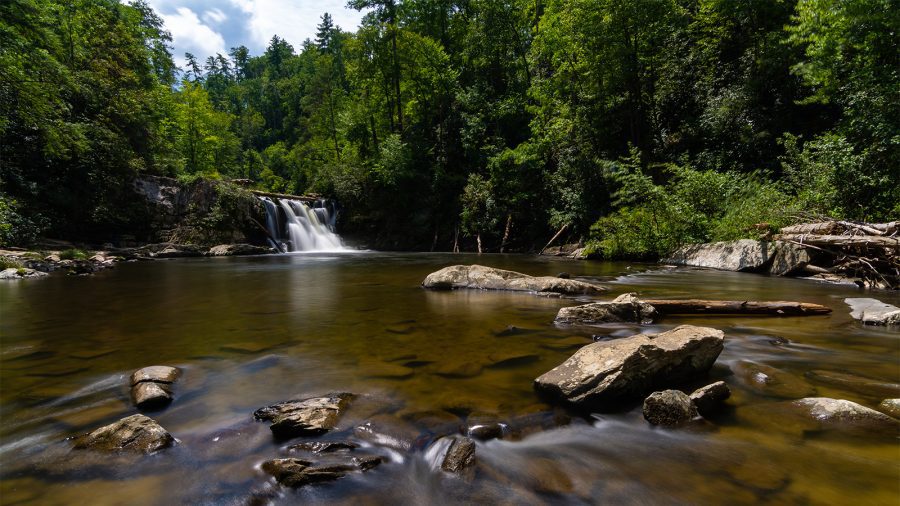
Visit a waterfall
Waterfalls are ubiquitous throughout Great Smoky Mountains National Park. There are many waterfalls to visit, but a few are must-sees. One of those is Laurel Falls, which is easier to visit, thanks to the paved trail and relatively short 2.6-mile round trip.
For a more challenging hike, visit Abrams Falls, which is just 20 feet high, but is one of the more powerful falls in the park. For a truly grand waterfall, hike four miles to Ramsey Cascades, a 100-foot waterfall.
Climb a peak
The southeastern U.S. in mid-summer can be uncomfortably hot and humid, to say the least. The best way to beat the heat of summer in the park is to find higher ground. Once you get above 5,000 feet you’ll find temperatures 15 to 20 degrees cooler than in the lower valleys.
Hiking trails that will take you to cooler elevations include Clingman’s Dome Trail, nearby Andrews Bald Trail, the Alum Cave trail that takes you to the summit of Mt. LeCompte, and the Chimney Tops Trail, located just seven miles from the Sugarlands Visitors Center in Gatlinburg.
Observe wildlife
Great Smokies National Park is one of the best places to see wildlife in the southeastern U.S. The heat of the summer brings wildlife into full action in the Smokies. It’s an especially good time to see one of the park’s most sought after residents: bears. Although wildlife can be encountered throughout the park, Cades Cove is an especially good place to spot wild turkey, deer, and even a bear or two.
The Smoky’s Cataloochee Valley is one of few places in the east that you can spy an actual elk herd. As for smaller creatures, the Great Smoky Mountains boasts more than 30 species of salamanders with many considering it to be the salamander capital of the world.
Things to do in fall
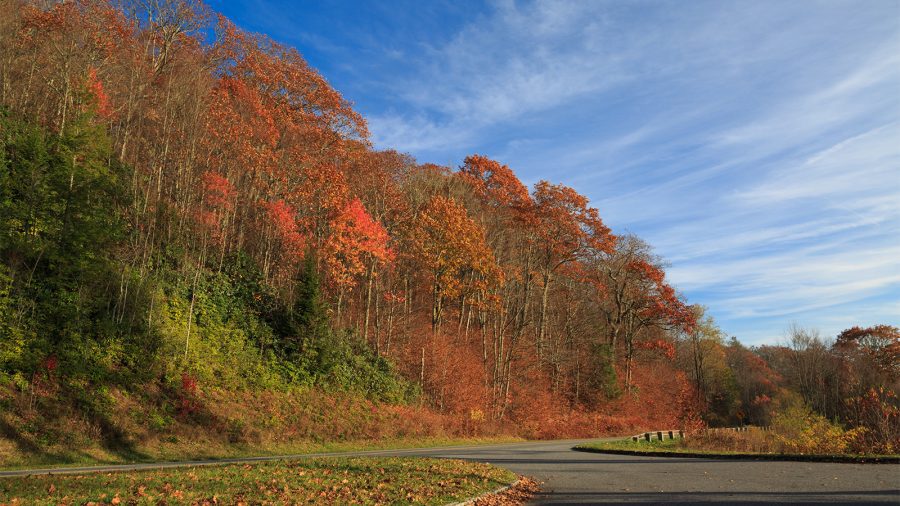
Marvel at the fall colors
One of the most popular things to do in the park comes with the arrival of autumn and fall colors. The parks’ dense deciduous forest and amazing vistas only become more spectacular in the fall when the leaves change, turning what was already beautiful into spectacular.
While hiking is an excellent way to see the colors, the car is just as effective.
A few roads that will give you particularly breathtaking views include Newfound Gap Road, which follows the lowest elevation pass through the Smokys, Clingmans Dome Road, which provides plenty of elevation to view the changing colors, and the Roaring Fork Motor Nature Trail, which intermingles beautiful waterfalls with the changing colors.
Visit a fall festival
Visit a fall festival. Fall festivals are popular throughout the southeast and they’re a particular treat in the Smoky Mountains. The popular Dollywood in Gatlinburg celebrates its Harvest Festival each year.
Check out Oktoberfest at Ober, which is a German-themed Oktoberfest-style event featuring German fare such as beer, bratwurst, and schnitzel and German music, and dance. Other popular fall fairs include the Gatlinburg Craftsmen’s fair, and Wears Valley Fall Festival.
Bike Cades Cove Loop
While cycling is a challenge reserved only for the stoutest cyclist through the mountainous terrain of the park, the Cades Cove offers an 11-mile road that’s perfect for cycling. Too long for a hike, a bike allows you to make a day trip out of this route while viewing wildlife and visit the area’s 19th-century buildings.
Bikes are available for rental at Cades Cove Campground. Cataloochee Valley and Oconaluftee River Trail in North Carolina is another area suitable for cycling. The latter offers views of wildlife, including an Elk herd, and a few 19th-century buildings while the latter skirts the river.
Things to do in winter
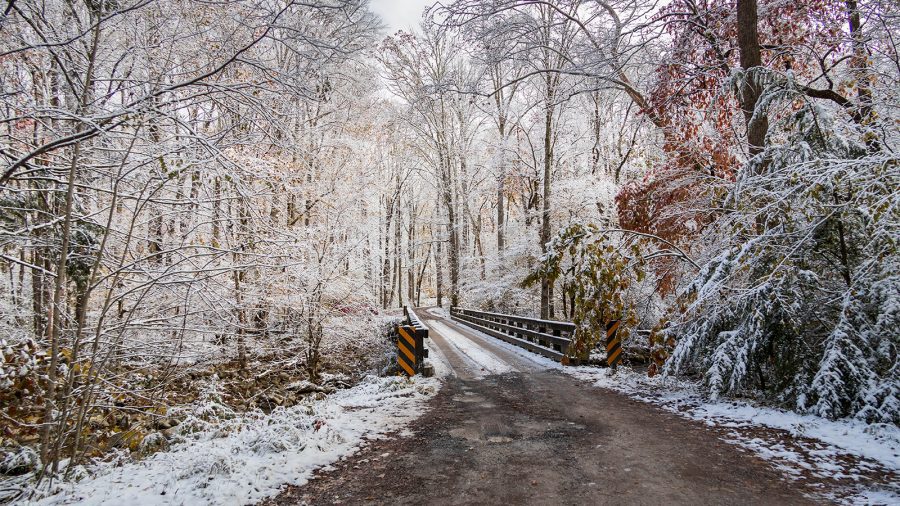
Take a winter hike
Hiking isn’t just a summertime time recreational activity in the Smokies. Hiking in the winter can expose you to a different kind of beauty the area has to offer. Snow turns the landscape into a place unlike any other season with frozen waterfalls and snow-covered balds. You’ll also be free of crowds and bugs, making for a peaceful experience.
Some of the best places to hike in the winter include Andrews Bald, Porters Creek, and Laurel Falls Trail. Just make sure to take precautions by taking the right gear. Heated socks, a good winter jacket, and hiking boots with substantial tread are a must for hiking through snow and ice-covered trails.
Read More : 11 Things to Bring for A Day Hike
Visit a frozen waterfall
There are few things as breathtakingly beautiful as a frozen waterfall. When the mercury drops particularly low in mid-winter, the waterfalls in the park freeze. And there are plenty to visit in the wintertime in Smoky Mountains National Park. Waterfalls such as Grotto, laurel, and Abrams offer relatively short hikes for viewing.
Just make sure to bundle up with the proper gear: a waterproof winter jacket, wool socks, and some quality hiking boots. Others are accessible by car, including the Sinks, Place of a Thousand Drips, and Meigs Falls, which is particularly breathtaking in the wintertime.
Things to do in spring
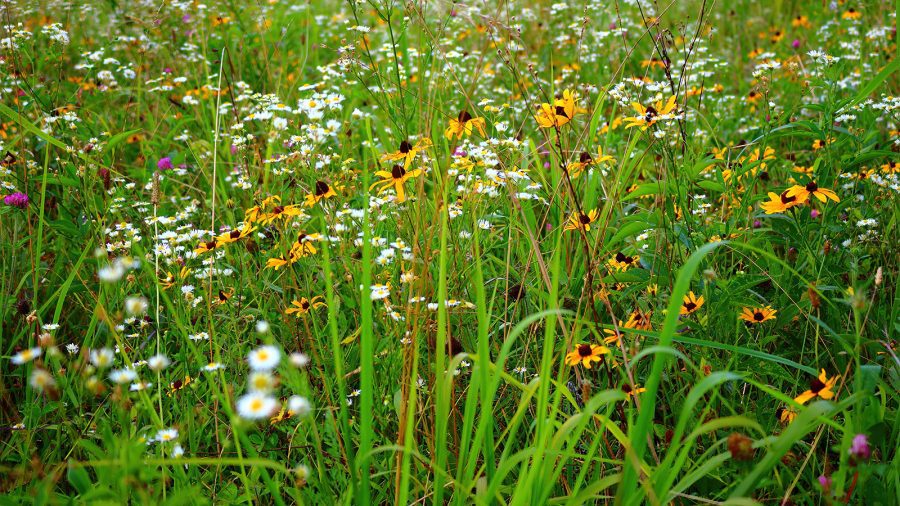
Check out the wildflowers
This is also a great time to pick flows. The Smoky Mountains is home to more than 1,500 species of wildflower, including violets, azaleas, purple phacelia and butterfly weed. The park hosts a Spring Wildflower Pilgrimage, a week-long festival celebrating wildflowers, every spring.
Go early to view the amazing ephemerals, wildflowers which bloom early in February before going dormant by April. May through June is an excellent time to find them on such trails as Gregory Bald, Deep Creek Trail, Kanati Fork Trail and Schoolhouse Gap Trail.
Go for a hike
In the spring in the Smokies, the temperature is warming, snow is melting and the weather is rainy. This is all an excellent recipe for amazing waterfalls, which will be in full form.
Visit Laurel Falls, which is an easy loop with its paved path.
It’s also a great time to visit some of the higher peaks before the weather turns warm and those ascents become more strenuous. Mt. Leconte, Clingman’s Dome and Andrews Bald are moderate hikes that offer excellent views of the budding trees and vegetation on the mountainsides.
Read More : Best Hikes in Great Smoky National Park
Have a picnic
With the weather warming up but before the summer bugs arrive, it’s a great time to use one of the park’s many picnic areas. There are eleven picnic areas located inside the park with locations in Cades Cove, Deep Creek, Greenbrier and Metcalf Bottoms open all year round.
For incredible views, head to the Chimney tops picnic area (opens in early March), which offers incredible views of the mountains and nearby river. Just to dispose of garbage to prevent bears from identifying the picnic areas as a food source.
Things to do with kids
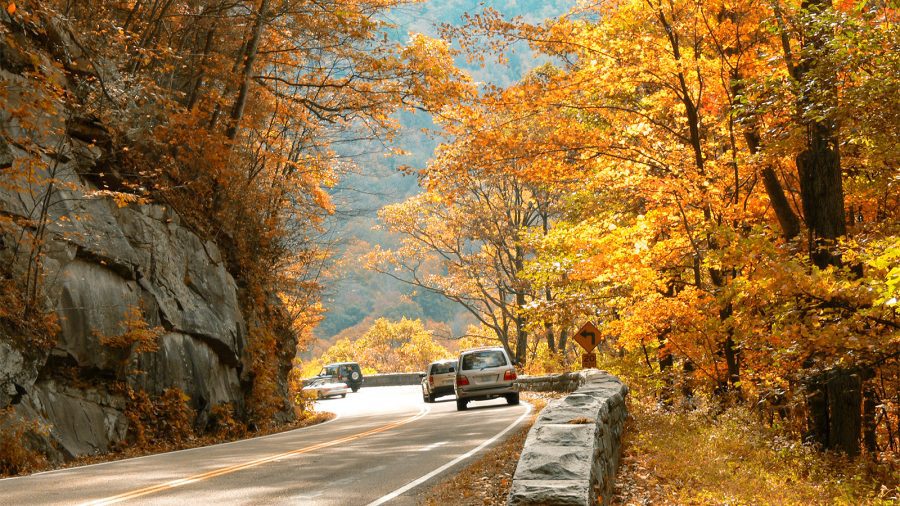
Take a scenic drive
Young children may not have the strength for the strenuous hikes required to find amazing views, but there are plenty of opportunities for them to reach great heights with the help of a car.
One of those is the highest point, which is Clingman’s Dome, which features a short walk up to the observation tower. Newfound Gap Road, one of the lowest passes through the Smokies, provides amazing views on a drive covering 3,000 feet in elevation.
Take a kid-friendly hike
While many of the hikes in Great Smoky Mountains National Park are difficult for shorter legs, there are plenty for the whole family. Many trails offer easy terrain and great payoffs for the effort in the form of waterfalls, historic buildings and scenic views.
Porter Creek Trail follows a historic road and features waterfalls and historic buildings. Deep Creek Trail is longer at five miles but features easy terrain and several waterfalls. Abrams Falls Trail is a popular favorite due to its short length, moderate terrain, and spectacular falls.
Go tubing
For older kids, a memorable and fun activity to do in the summertime is tubing in the Deep River area near Bryson City and Cherokee. Tubing in Deep Creek is divided into two areas, an upper section that features white water and is more suitable for adults, and a lower section which is wider and calmer, making it an excellent option for the whole family.
There are many tube rental companies located by the river on Deep Creek Road. The put-in for this lower section is located at the swimming hole just before the first bridge.
Amanda Williams
Amanda Williams is a writer, plant-nerd, and outdoor enthusiast. She has traveled extensively, around the U.S., throughout Asia, Europe, and Latin America. Everywhere she treks, she takes time to enjoy the outdoors. John Muir is her hero. She aspires to inspire people to live better as he did.
